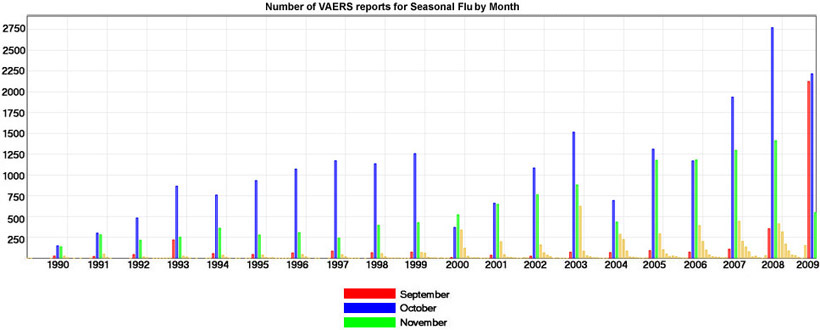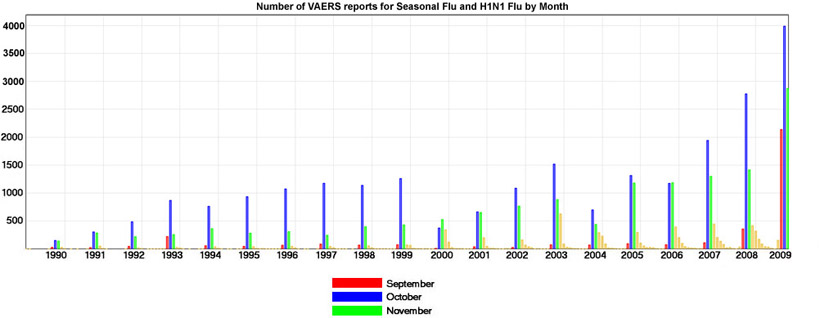
Information Center
Your Health. Your Family. Your Choice.
 |
National Vaccine Information Center Your Health. Your Family. Your Choice. |
The MedAlerts Blog |
I have been tracking Seasonal Flu reports (not H1N1) since August, and they show a Flu season that started early and had more VAERS reports than ever before. November results confirm this. Here is the graph of VAERS reports over the past twenty years of data collection, broken down by the month the Flu vaccine was given:

Typically, the worst month is October (shown in blue) but this year October is not much worse than September, and is lower than it was last year. Part of this is explained by the fact that October data is not yet completely reported (there are still people who were vaccinated in October and have not yet filed VAERS reports). Another explanation, however, is the rise of H1N1 Flu vaccines which became available in October. It is likely that many people stopped getting Seasonal Flu vaccines in October and switched to H1N1 instead. So it makes sense to combine H1N1 and Seasonal Flu reports into a single graph. Doing this shows that the number of VAERS reports related to Flu vaccines is through the roof, dwarfing all previous years:

Think of all of the vaccinations given and consider how few of them are HPV vaccinations. Then consider that over the past two years since the introduction of the HPV vaccine, about 20% of the VAERS reports have been related to HPV. It's mind-boggling. Not only that, but these reports list 57 women who have died (CDC Wonder is showing 61). Of course, I'm only guessing that all 57 were women, because a breakdown of these reports by gender shows that 50 of them were women and 7 were of "unknown gender".
<< 10/2009: HPV and Flu #3 12/2009: HPV vs. Flu adverse event rates >>
Copyright ©
2025 National Vaccine Information Center. All rights reserved.
21525 Ridgetop Circle, Suite 100, Sterling, VA 20166